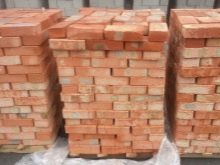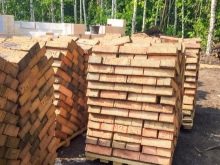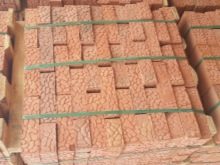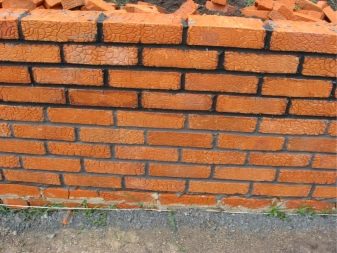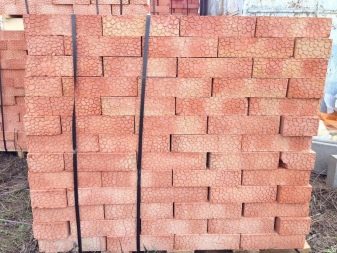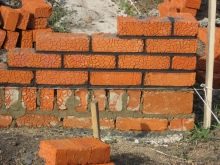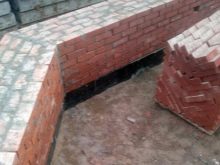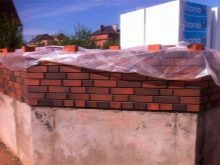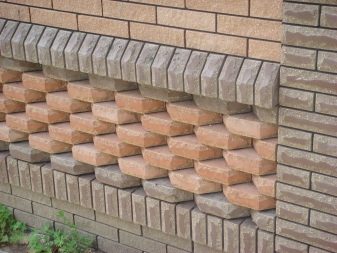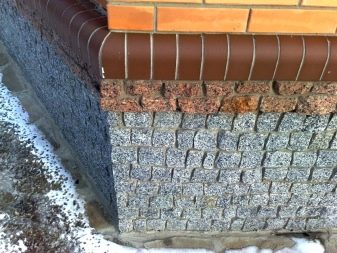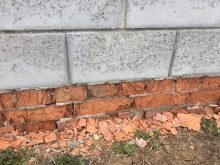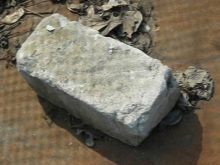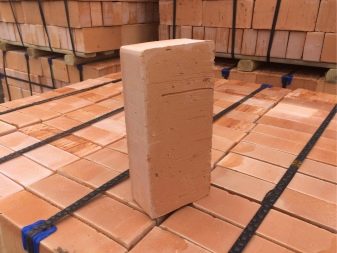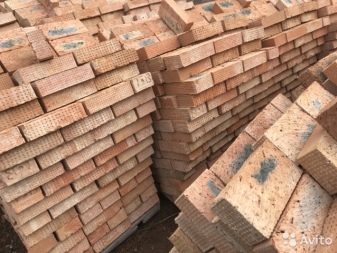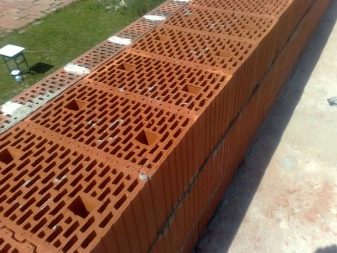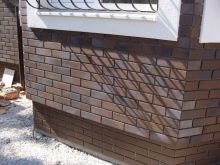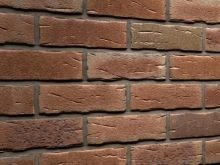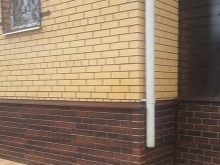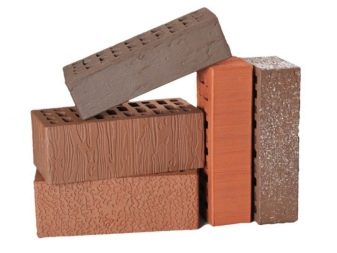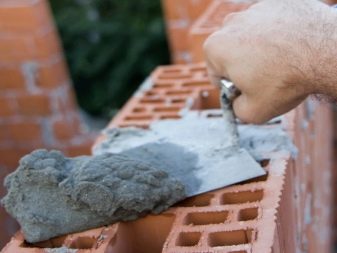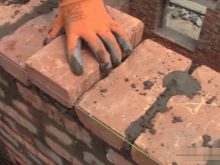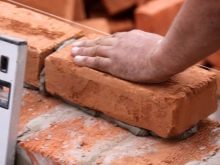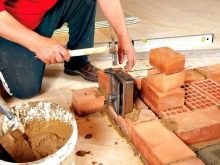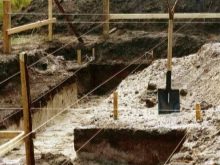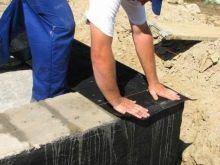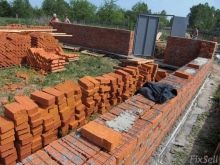Ground brick: how to choose and lay out?
Significant loads from the residential (and not only) structure assumes not only the foundation, but also the basement. In addition, the latter is exposed to negative external factors such as precipitation, as well as the front part of the construction. That is why it is so important to select high-quality and durable materials for the base, which will serve for many years without problems. Today, we will take a closer look at building materials such as the socle brick, and find out how to properly stack it.
Requirements
Before looking for a specific type of brick for the construction of the basement, should find out what requirements it must meet.
- Such a building material should have sufficient density and rigidity.Too plastic and fragile products will not work. A suitable brick should not be subjected to deformation under the influence of serious loads.
- Brick for the base must be resistant to wear. He should not be "afraid of" precipitation. In addition, this building material must be moisture resistant. Otherwise, it will serve for a very short time and will quickly begin to collapse.
- These building materials should not be afraid of low temperature and frost conditions. Water absorption of the basement brick should be as low as possible. Otherwise, the building material simply goes cracks and fails.
- Building material for the basement should have standard dimensional parameters. If the material meets this requirement, then its installation will be simple and fast, and it will be able to cope with an inexperienced home master.
- The brick for the base must be distinguished by a sufficiently good and reliable adhesion with the mortar selected for construction work.
- The product must be environmentally friendly. The use of toxic products will not be the best solution.
- It makes no sense to buy too expensive brick for the base. This building material must have an adequate price.
- The type of basement brick is also important. It must be aesthetic and attractive.
Why do you need a base?
Brick basement structures are made to:
- to ensure the full protection of wall bases from falling into their structure of low temperatures and harmful moisture;
- form the correct horizontal plane for the subsequent laying;
- evenly distribute the load on the foundation;
- provide the necessary floor level of the lowest floor;
- make a higher technical underground;
- make the construction more aesthetic and solid.
From all the above tasks, we can conclude that for the construction of the basement it is necessary to select only high-quality bricks, which will easily carry heavy loads.
Kinds
For the construction of the basement construction, you can use different types of bricks. Consider the characteristics of the most popular and common options.
Silicate
Very often silicate brick is used in the construction of the basement. Such a building material is characterized by high strength, but at the same time it has an impressive weight, so it is not always convenient to work with it. The level of silicate water absorption is about 8-16%.Such products are made in accordance with the pressing technology of a special composition prepared from quartz sand and lime. From such components very strong and durable blocks turn out. However, they also have one serious disadvantage - they are distinguished by rather low resistance to water.
According to experts, the specified building material is not suitable for the middle band. Even if in similar circumstances the walls of the house are made of reliable silicate brick, the basement is usually made of more waterproof materials.
Clay
Often in the construction of basement designs, masters turn to popular clay bricks. This building material is made with the involvement of heat treatment technology, that is, "baked".
Clay bricks are good because they are more water resistant, especially when compared with silicate products. But it is necessary to take into account that it is completely unimportant whether this material is full-bodied or hollow - both options will actively absorb moisture into their structure. This quality affects the frost resistance of brick structures. In the case of freezing in the pores of the water begins to expand,and therefore tear down the material itself.
If you select clay bricks for making the base, then you better rely on their brand. Products with different markings and characteristics differ. For example, some models are cold-resistant, while others are not prepared for low temperatures. For example, M150 bricks can seamlessly transfer more than 60 cycles of freezing and thawing. The higher the brand number, the higher the frost resistance.
Ceramic acid resistant
Excellent performance characteristics boasts a ceramic acid-resistant brick. He has the following qualities:
- resistant to moisture and moisture;
- "Not afraid of" temperature extremes;
- is frost resistant;
- differs in rather low water absorption;
- has good sound insulation qualities;
- It has a good thermal insulation.
This common building material is characterized by high density, so that it is permissible to build from it even multi-storey structures. Another important feature of ceramic bricks is its resistance to hazardous environments.This quality is very important for the socle, because as in the soil, and in atmospheric precipitation there are various chemically active components.
In the composition of such products there is such a necessary component as clay, supplemented with dunite.
Clinker
The degree of water absorption of clinker brick reaches 3-5%. Like the popular clinker tiles, such building materials are made from special grades of clay in accordance with the technology of single firing in an environment of high temperatures.
The carrying capacity of clinker bricks is much higher than that of standard red building materials. In addition, it has a good decorative qualities and color stability. Many companies provide a guarantee for these products to 100 years. However, one must keep in mind that such products are more expensive than other options.
Criterias of choice
If you want to build a neat and high-quality base, then you will need to choose the appropriate brick. In this case, you should rely on the following important criteria.
- The same color and shape of the bricks in the party. Be sure to pay attention to these parameters.If the individual bricks in the package will vary in their hue, it will immediately be evident. The construction of such materials will look disharmonious. If the bricks differ in shape, then it will be almost impossible or extremely difficult to build a correct construction of them.
- Surface. Look at the surface of the bricks to be assembled for the construction of the basement. It must be perfectly flat and intact - no cracks or chips should be visible on it. If they are still observed, it is better to refuse to buy such products - perhaps they will not last for a long time and will not withstand serious loads under the weight of the same brick house.
- Colors. Look at the color of the bricks. Not only should it be the same for all bricks. The color of these materials should be sufficiently bright and uniform. Dim and whitish areas should not be.
- Cost Of course, every consumer wants to save money and buy not only high-quality, but also inexpensive brick. It is worth being careful here. Materials with a suspiciously low cost may turn out to be of poor quality and not designed for serious loads.
- A store. It is necessary to acquire a brick for the construction of the basement in the checked outlets known in your city. It is better to refuse bazaar and shop products - it is rarely really high-quality and reliable. When purchasing, it is advisable to request a quality certificate from the seller, which will list all the characteristics of the building material. If the request was denied to you, then it is better not to risk and go to another store.
How to lay out with your own hands?
It is quite possible to build a brick basement with your own hands. The main thing is to use only high-quality building materials and take into account all the features of such work. Let's get acquainted with them.
- It is important to bear in mind that the thickness of the basement structure will always depend on the materials from which the facade is made. If it is made of brick, then the width of the base should be at least 51 cm. If we are talking about a log house, then there will be enough a 25 cm base.
- As a rule, the laying is done in 1.5 or 2 bricks in width. The total height of the cap should be at least 30 cm.
- In order to lay a brick correctly and securely, it is advised to use cement solution with a grade not lower than M200 with lime and sifted sand.The proportions should be as follows: 1 part of cement to 6.7 sand, as well as 0.7 clay or lime.
- It is important to monitor the consistency of the composition. It should be thick as dough. At 1 part of the cement usually take about 0.8 parts of water. In order to make the liquid composition too thick, it is permissible to mix in it more lime or clay. Also, experts advise to mix a small part of plasticizers (in the role of these components it is allowed to use detergent).
- In order to effectively waterproof the basement structure, you can float the sheets of roofing material or roofing sheets. They need to impose a foundation covered with bitumen mastic. Fitted waterproofing in 2 layers with the addition in the form of the same mastic.
- Brick base must be properly insulated with suitable coatings.
- In order outside the basement was reliably protected from adverse external factors and precipitation, it will need to be completed with high-quality finishing. It will not only protect the structure, but also make it more attractive and aesthetic.
Tips
Before the start of construction work, you must make sure that the foundation is horizontal.And it does not matter at all what foundation was built on the site - tape, columnar or any other. You will need to make sure of its correct performance in any case.
If you chose a silicate brick for the construction of the base, then you should remember that although it is very durable, it quickly absorbs the liquid, after which it swells and loses its strength properties. This building material is recommended to be contacted only if you live in a region with a fairly dry climate. In this case, you need to take care of a good waterproofing basement structure.
If you could not find the perfect brick for the organization of the base, then it can be built from concrete.
Before proceeding directly to installation work, it is necessary to calculate the extent to which you need to buy building material. To do this, it is permissible to use online calculators and services on construction portals, or try to do all the calculations yourself. Of course, in most cases, people turn to the first method, because there it is much more difficult to make a mistake.
Experts strongly recommend to buy a brick for the base with a small margin, given the possibility of a collision with defective parts or damage during transport.
The socle brick is often supplemented with various siding materials. Beautiful stonework is especially popular today. It looks harmonious with most existing facades of different shades. With this addition, the home will look much more interesting.
Masonry mortar can be bought not only in the finished state, but also procure yourself. For this, cement and sand are taken in a ratio of 1 to 3.
When setting up a brick basement structure, the mortar should be laid no more than 1 cm thick. It is especially important to observe this rule if the foundation of the structure is made of reinforced concrete blocks.
Many users are interested in whether it is permissible to use a brick that was not fired during the manufacturing process for organizing the base. Yes, the use of such building materials is permitted, but experts advise to give preference to blocks that, nevertheless, have undergone this procedure. It is recommended to apply the use of unfired bricks only if it is not possible to purchase other materials.
Do not forget about the insulation of the basement, if you are building a residential structure.It is also necessary to take into account that there are three types of basement structures - the entrance, end-to-end with external walls and recessed. The latter is always constructed for residential buildings at a depth of 6 cm below the outer wall bases.
For information on how to select and lay out the basement brick, see the following video.

